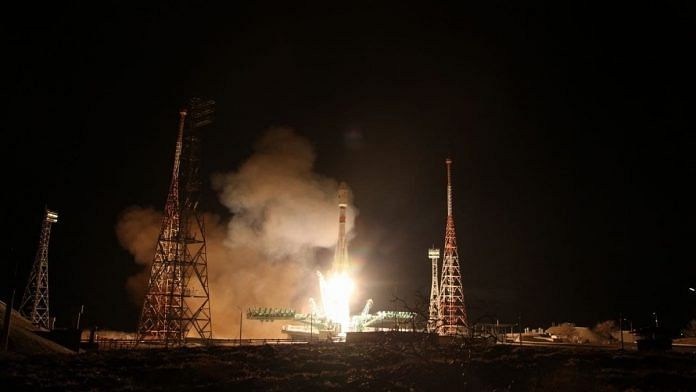Bengaluru: A Russian rocket stage from a failed satellite test is expected to pummel into the Earth’s atmosphere over the next few hours.
The Angara A5 launcher was launched in a test flight on 21 December from the Plesetsk Cosmodrome site in northern Russia. It couldn’t achieve its designated orbit due to the re-ignition failure of its upper stage Persei booster.
The 20,000 kg booster remained in degrading low orbit and is expected to make an uncontrolled reentry, likely between 1330 UTC (7 pm IST, Wednesday) and 2330 UTC (5 am IST, Thursday).
The IPN/Persei vehicle stranded in low parking orbit when the Persei stage failed to restart is reported to have a mass around 20 tonnes including propellant (more like 3 to 4 tonnes dry). It is expected to make an uncontrolled reentry between 1330 UTC and 2330 UTC Jan 5 pic.twitter.com/5XOGMZsnBx
— Jonathan McDowell (@planet4589) January 5, 2022
The precise time or location of reentry is not yet confirmed, and the booster stage is expected to break up into smaller chunks during the process and burn up in the Earth’s atmosphere.
This was the third test flight for the Angara A5, Russia’s newest rocket launcher. It is named after a river in Siberia and is the first heavy-lift launch vehicle built by Russia since the breakdown of the USSR in 1991.
It was developed to reduce Russia’s orbital launch dependence on the Baikonur Cosmodrome, which is located in southern Kazakhstan in an area that is on lease to Russia, and launch directly from Russian soil.
Also read: NASA picks up Indian-origin doctor Anil Menon as astronaut for future missions
Flight test details
The first test flight for the rocket took place in December 2014, inserting a test payload into a geosynchronous orbit (GEO).
A GEO is a low inclination orbit around earth with a period of 23 hours, 56 minutes, and 4 seconds, located 35,786 km from the Earth’s surface. The satellite’s orbit matches the rotation of the Earth, because of which it appears in the same position in the sky to observers on the surface.
The second test flight was pushed from 2016 to December 2020, when another dummy payload was inserted into GEO.
This third launch, which also carried a dummy payload, was the first to use the brand new Persei upper-stage booster engine, which is used only when delivering payloads to GEO and not to low Earth orbit (LEO).
The Persei booster uses a new, less toxic propellant instead of the traditional unsymmetrical dimethylhydrazine or heptyl, which the predecessor family of Proton rockets use. Heptyl, a combination of hydrazine and nitrogen tetroxide, can cause serious environmental damage and has already raised numerous concerns for regularly being used in Kazakh airspace despite accidents.
After the 21 December launch, the first two stages underwent nominal firing and the Persei stage hoisted the payload to LEO. But it subsequently failed to fire again and did not reach the necessary GEO.
The next flight for Angara A5 is scheduled for March 2022, with a communication satellite payload. Future heavy flights would launch from Russia’s newest spaceport, Vosochny, which has been launching medium-lift Soyuz vehicles for the past five years.
Also read: Soon, one out of every 15 points of light in the sky will be a satellite



